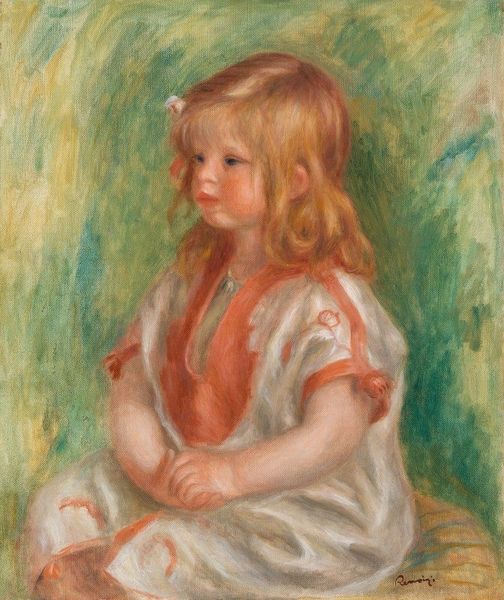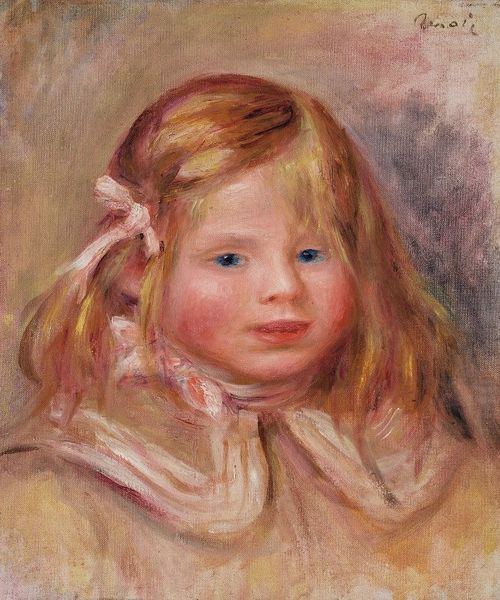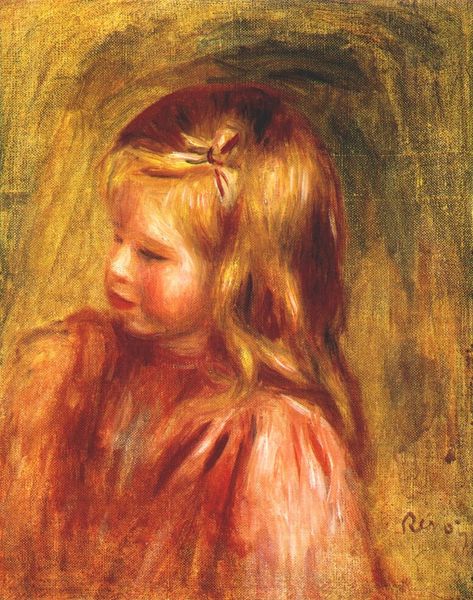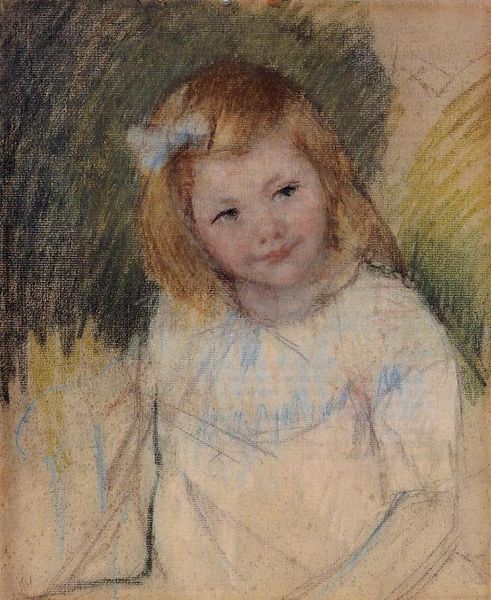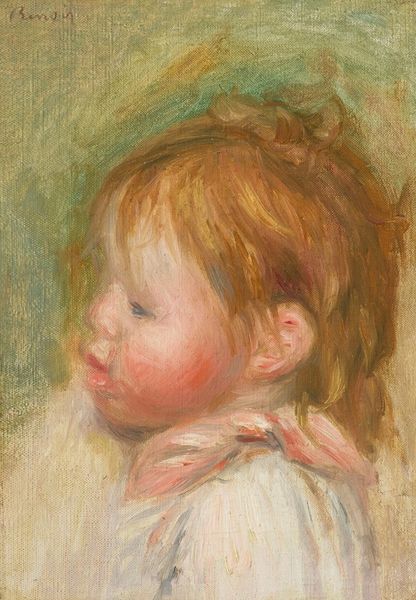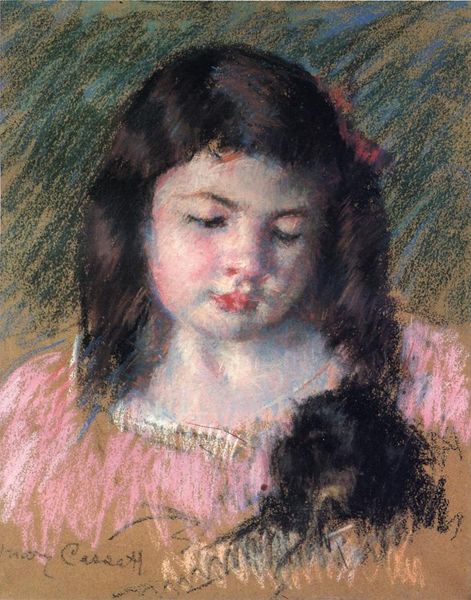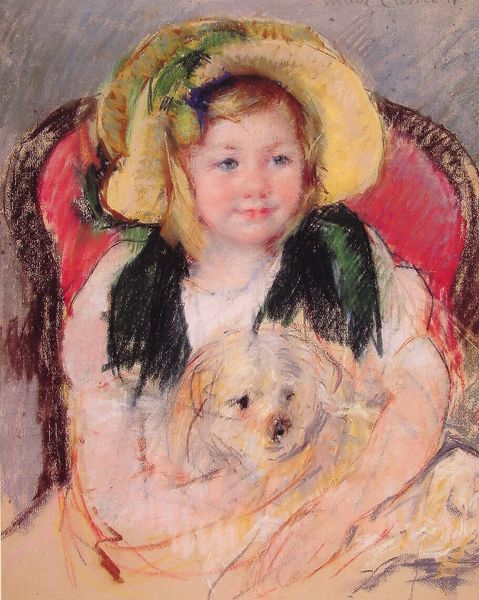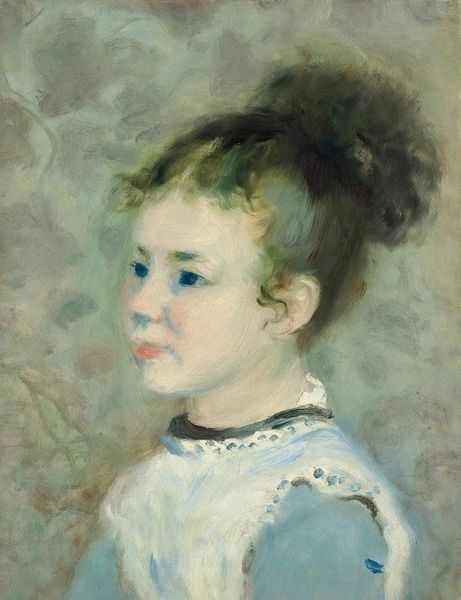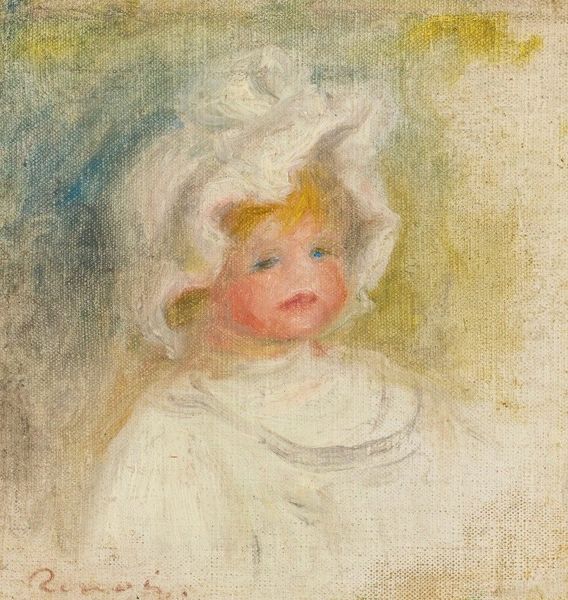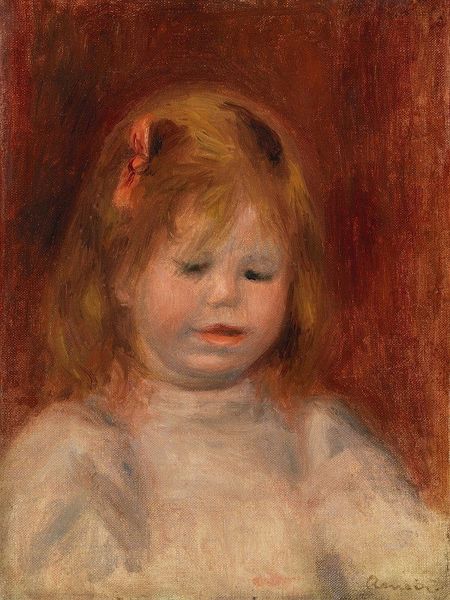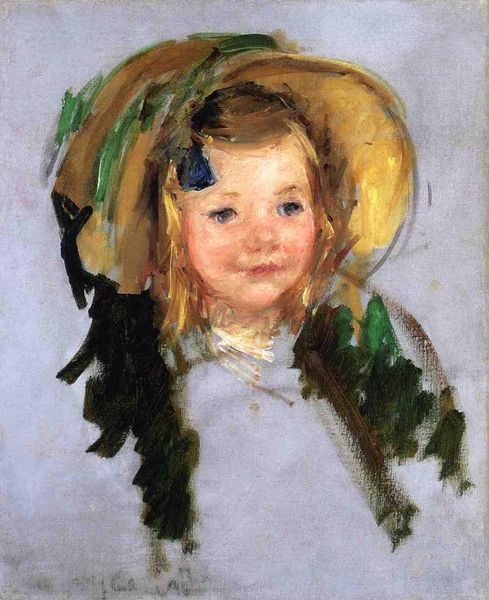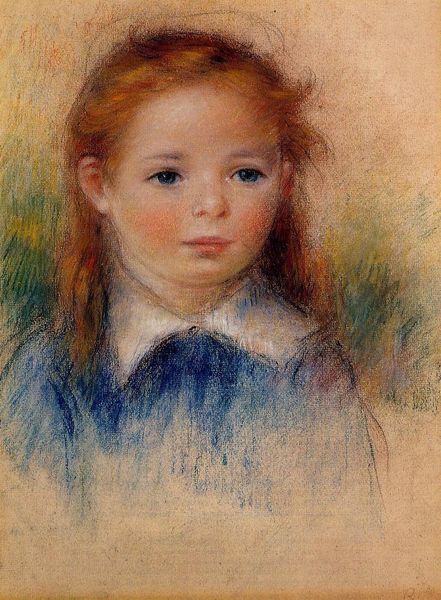
Copyright: Public Domain: Artvee
Editor: Here we have Renoir’s “Child with Blond Hair,” painted around 1895-1900 using oil on canvas. There’s something melancholic about her closed eyes and the indistinct background. What do you see in this piece beyond the surface, how does it speak to its time? Curator: It's a beautiful observation, that melancholy. Renoir, often celebrated for his idyllic scenes, also hints at the complexities of childhood within a rapidly changing society. Think about late 19th-century France: the rise of industrialization, shifting class structures, and evolving notions of childhood innocence. Doesn't her averted gaze almost seem to reject the viewer? What does that tell us? Editor: It’s like she’s resisting being observed, or even objectified, which is interesting given the history of portraiture. Were artists starting to become aware of those power dynamics? Curator: Exactly! Artists were beginning to question those established power dynamics and gendered representations. While Renoir was no revolutionary, paintings such as this implicitly question the traditional representation of women and children, almost anticipating future feminist discourse within art history. Do you agree with that reading? Editor: I do, especially when we consider the lack of specific detail. She's a child, a universal figure, not a specific person meant for display. It raises some unsettling questions about privacy. Curator: Precisely! And, in the context of Impressionism’s move outdoors -plein air painting- she seems displaced from nature, reinforcing that sense of a loss of innocence and detachment, right? Editor: That makes a lot of sense! It shows how even a seemingly simple portrait can reflect significant social and intellectual shifts. Curator: Indeed! The beauty of art is how it subtly captures the anxieties and evolving consciousness of its time. It reminds us that art history and social theory are so interwoven. Editor: Definitely food for thought. It reframes my entire understanding of Renoir. Thank you!
Comments
No comments
Be the first to comment and join the conversation on the ultimate creative platform.
